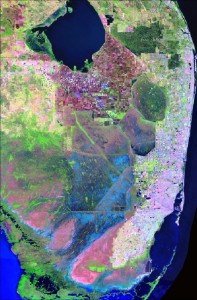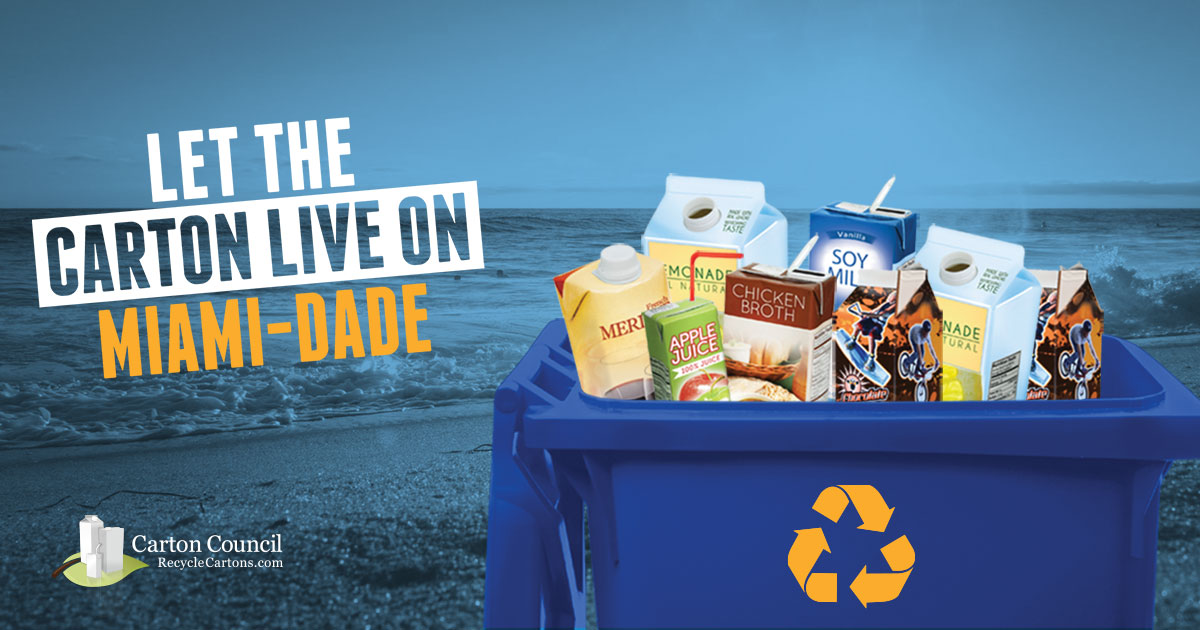The rise in the human population, coupled with expanding resource use, supported largely by the use of fossil fuels, is leading to changes in the biosphere at rates greatly exceeding the evolutionary past. Today we find ourselves at a time where there is little doubt that human activities are leading to changes in the composition and chemical reactions of our atmosphere. The consequences of these changes, their specific and global impacts, the rates of change, and the ability of living beings to adapt to these changes are the basis of prolonged arguments. A usual outcome is one of concern; but only relative to those perceived as more immediate and individually consequential e.g. economic productivity, property values, etc.
Viewing peninsular South Florida via high altitude or satellite imagery shows a close juxtaposition of urban and agricultural development intermingled with the “aquatic” environments of the remaining Everglades and the coastal ocean (Fig. 1). Although we may have the perception, especially promoted by our built structures including canals, water control structures, levees, and seawalls, that these areas are distinct areas they are actually intimately connected. Many “ecologist”, the scientists that seek to understand environmental systems and the connections within, them do not see a separation between natural and developed systems. Rather it is readily apparent, especially looking at large-scale development or global atmospheric change that all parts of the environment are now in some way influenced by people. Similarly, our urban systems are vulnerable to the consequences of environmental factors such as sea level rise and increased frequency of storm events.
Mention the Everglades and most people would recognize it as a unique environment of global significance; a “river of grass” home to myriad habitats for a multitude of flora and fauna. Wetlands such as the Everglades provide many ecosystem and societal services, including habitat for wildlife, cleansing water of nutrients and pollutants, serving as sinks for atmospheric carbon and, most importantly to this thesis can act as recharge zones to groundwater aquifers. It is this latter function, the Everglades recharging of the shallow Biscayne aquifer that has a direct impact towards building the resilience of urban South Florida to sea level rise. The Everglades is at the center of one of the world’s largest restoration efforts. These efforts will not only benefit this wilderness but are also imperative to supplying the drinking water to almost 6 million people in South Florida that tap into the Biscayne aquifer.
Unfortunately, urban South Florida is ground-zero for sea-level rise impacts. Projections vary widely but several planning compacts predict about 3-7 inches increase in sea level by 2030 and a few feet by 2060, an unusually short period of time considering sea level rise in the geologic past. Several consequences are already being observed including the increased frequency of nuisance flooding in South Beach and along Brickell, especially during “King Tides”. One less visible but potentially more significant related effect is the precarious balance between fresh and saltwater in our porous limestone bedrock. A shallow lens of freshwater lies over denser saltwater in our Biscayne aquifer and supplies over 8 billion gallons of drinking and irrigation water per day to our communities. Increased freshwater withdraw due to population demand, reduced freshwater supply into the aquifer by curtailed flow into the Everglades, and increased landward pressure by increased sea levels all interact to deplete the aquifer and allow saltwater to intrude into our shallow wells. Restored flows into the Everglades will help recharge the Biscayne aquifer creating a hydraulic head that will help keep seawater off-shore and will therefore help mitigate potentially devastating effects of sea level rise (Fig. 2).
In a larger context, recognizing the ecosystem services provided by healthy natural environments and increasingly adapting our urban environments to incorporate them will lead to increased resiliency in both. We have continually urbanized our natural environments now we must determine ways to naturalize our urban environments. As exemplified by Everglades’ restoration, this is best accomplished by maximizing appropriate ecosystem services in quasi-managed ways.
Figure 1. Satellite image of South Florida showing the juxtaposition of urban and agricultural development to the remaining Everglades and coastal oceans. From McVoy et al. 2011.
Figure 2. Everglades as a recharge zone supplying water to the Biscayne aquifer and the effects of reduced recharge, increase withdraw, and rising sea levels on the balance between fresh and saltwater in the porous limestone bedrock. Images from South Florida Water Management District.
Written by Leonard J. Scinto, Ph.D.
Associate Director, Southeast Environmental Research Center and Assistant Professor, Department of Earth and Environment, Florida International University,
Email: sc*****@*iu.edu








